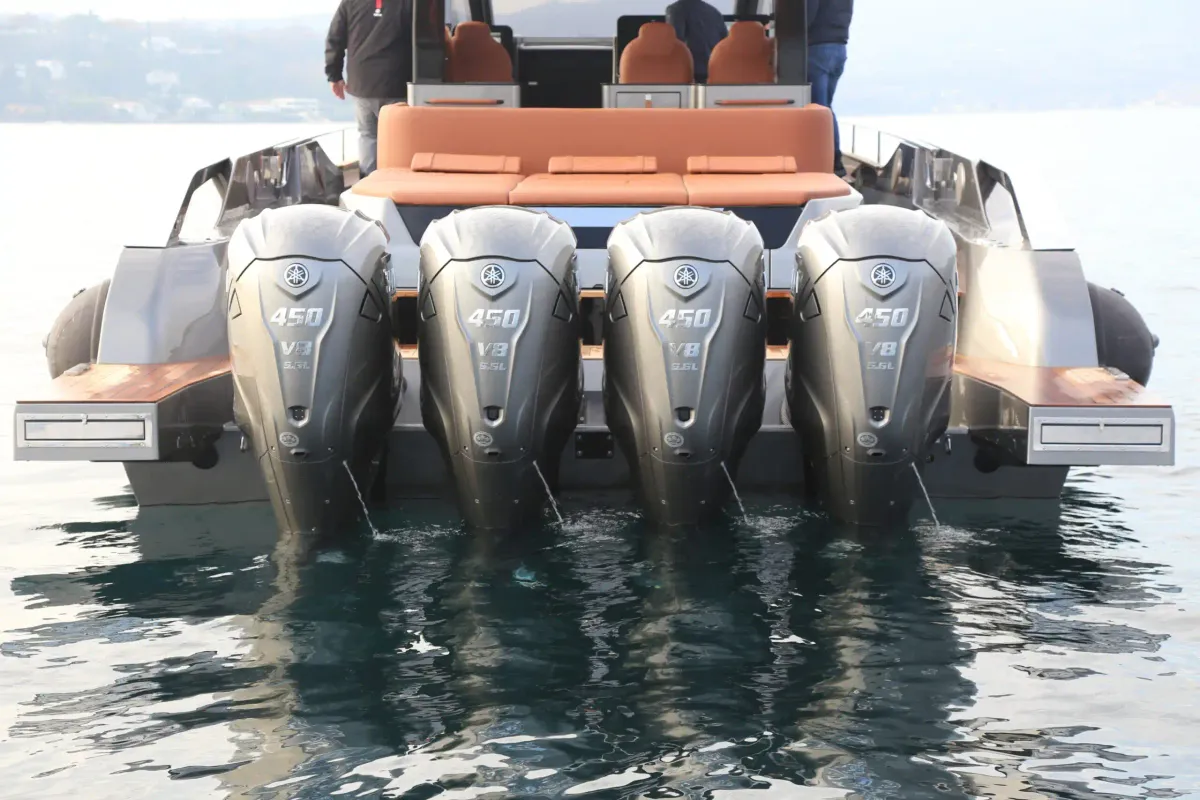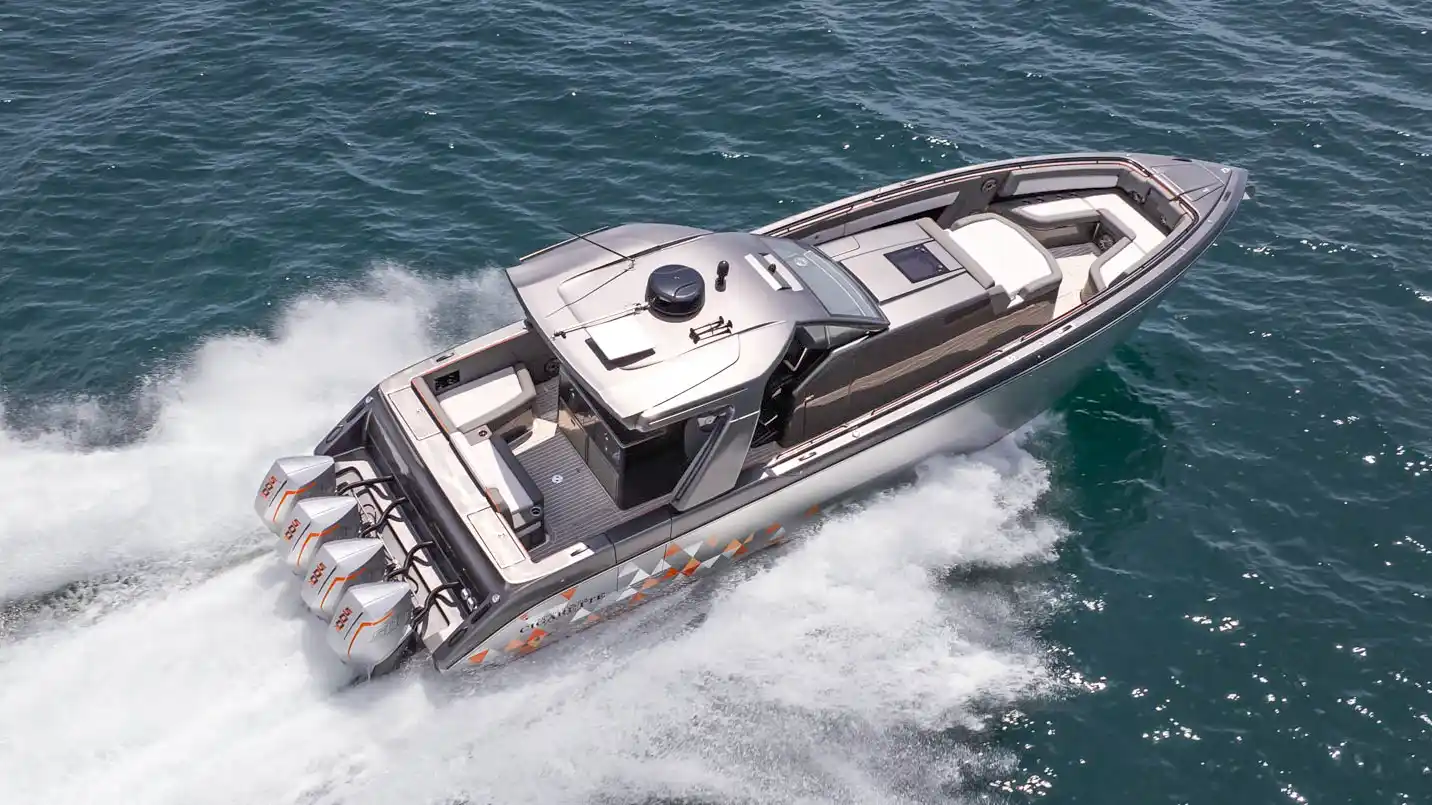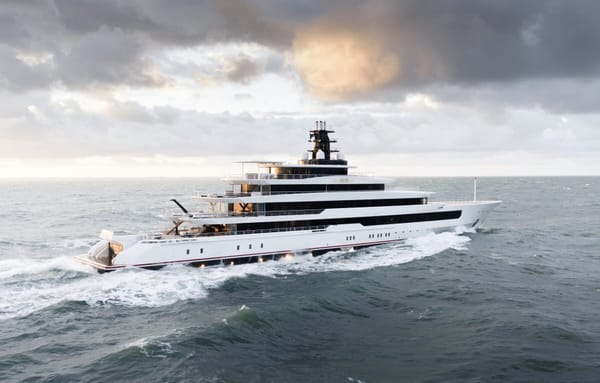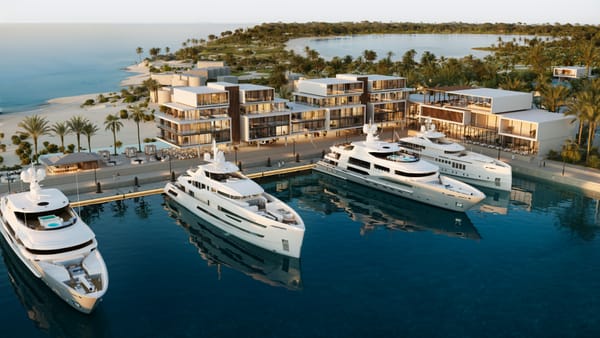Understanding Yacht Horsepower: HP vs. BHP and More

If you're in the market for a new yacht, you've probably encountered a confusing alphabet soup of engine power ratings: horsepower (HP), brake horsepower (BHP), and kilowatts (kW). Knowing the difference between them is essential to understanding a vessel's true performance and ensuring it meets your needs.
Yacht manufacturers can be inconsistent with the terminology they use. Some might list a yacht's power in HP, others in BHP, and European builders often use metric horsepower (PS) or even kilowatts. The core concept behind all these measurements is the same: they tell you how much power an engine produces. A larger number generally means better performance and acceleration, but a yacht's size, weight, and hull design also play a major role. For example, a massive superyacht needs far more power than a smaller vessel to achieve the same speed.

What is Horsepower (HP)?
Horsepower (HP) is a unit of power that traces its roots back to the late 18th century, when engineer James Watt wanted to compare the output of his new steam engines to the power of a draft horse. He calculated that one horse could lift 33,000 pounds of work per minute. So, he defined one horsepower as the power needed to lift 550 pounds one foot in one second.
Today, while many countries have adopted kilowatts as the standard for power, horsepower remains a common way to measure engine output in the marine industry. It’s a convenient, industry-standard unit that allows for easy comparison between different manufacturers.
There are a few variations of horsepower, each with a slightly different value:
- Mechanical (or Imperial) horsepower: 745.7 watts
- Metric horsepower (PS): 735.5 watts
- Electrical horsepower: 746 watts
For the purpose of marine engines, the two most important measurements are brake horsepower and shaft horsepower.
Brake Horsepower (BHP): The Engine's Raw Power
Brake horsepower (BHP) measures the raw power of an engine directly at its crankshaft, before any power is lost as it travels through the transmission system or propeller shaft. Think of BHP as the engine's potential or maximum output. It's the highest number you'll see on an engine's spec sheet.
BHP is a good indicator of the engine's overall capability, which affects everything from fuel consumption to potential top speed. It’s also often used by insurance companies to calculate premiums.
You can measure BHP with a dynamometer, a device that gets an engine to full revs and then measures the power it takes to slow it down to a stop.
Shaft Horsepower (SHP): The "Real World" Power
In the marine world, power has to travel from the engine through a series of mechanical parts—like a transmission and a propeller shaft—to turn the propeller. Just like in a game of telephone, some power gets lost along the way due to friction and other mechanical inefficiencies.
Shaft horsepower (SHP) is the most crucial rating for a yacht because it measures the actual power that reaches the propellers. This is the "truth teller" of marine power, revealing the real performance you’ll get on the water.
Power losses from the engine to the propeller are typically around 3%. This means a 1,500 BHP engine would likely deliver around 1,455 SHP to the propeller. While a high BHP number might look impressive, the SHP figure is what truly determines a yacht’s speed and maneuverability.
Metric Horsepower (PS) vs. Brake Horsepower (BHP)
Metric horsepower (PS), short for Pferdestärke (German for "horse strength"), is the European equivalent of BHP. It's based on the metric system (kilogram-meters) rather than the Imperial system (foot-pounds) used for BHP.
The key difference is in the numbers: 1 BHP is equal to about 1.014 PS. So, a 5,000 PS engine delivers slightly less power than a 5,000 BHP engine; a difference of about 70 horsepower. While this may not be noticeable on a casual cruise, it can influence a yacht’s performance during long crossings or when facing strong currents.
You’ll often see PS used by European yacht builders like Benetti or Feadship. Understanding this measurement is helpful when shopping for or maintaining a yacht in the European market, as it’s often used in local documentation and certifications.
The Kilowatt (kW)
For large superyachts, manufacturers may list power in kilowatts (kW). Named after James Watt, a kilowatt is a standard unit of power equal to 1,000 watts.
Converting kilowatts to horsepower is simple: 1 kW is roughly equal to 1.36 metric horsepower. The 72-meter superyacht KOGO, for example, makes 1,500 kW, which translates to about 2,040 metric horsepower.
The main reason many manufacturers prefer to use horsepower over kilowatts in their marketing is because the numbers look bigger and more impressive on a spec sheet.
Why Understanding Horsepower Matters
When buying a yacht, the spec sheet is a critical document, but the horsepower ratings it provides can sometimes be misleading. A manufacturer's ratings may reflect ideal testing conditions rather than real-world performance. Factors like hull design, propeller efficiency, and even water and air temperature can all affect a yacht's performance.
While you can’t easily measure a yacht’s horsepower directly, you can make an educated estimate:
- Consult with a professional. The best way to get a realistic assessment of a yacht’s power is to work with a naval architect or marine engineer. They can analyze the vessel's design, engine, and propeller to give you an accurate estimate of its power requirements.
- Analyze sea trial data. If you can access real-world sea trial data, you can see how the yacht performs in various conditions and get a better sense of its true power.
Accurately estimating a yacht's horsepower helps you set realistic performance expectations, anticipate fuel consumption for trip planning, and make informed maintenance decisions. It also plays a key role in the yacht's safety and stability, especially in rough seas. If you're new to buying a yacht, consider reading similar pieces such as How Much Does a Yacht Cost and Yacht Management in 2025.






